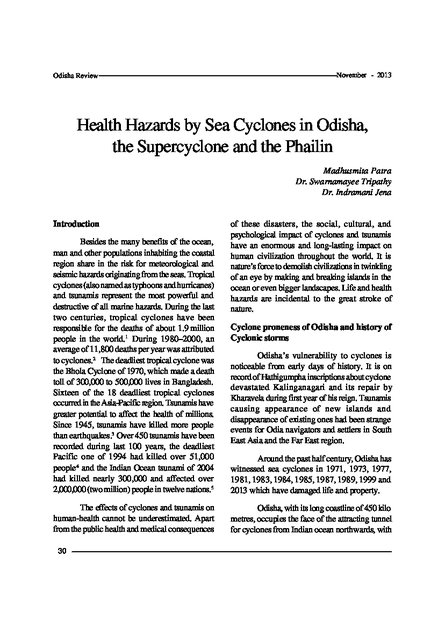
Besides the many benefits of the ocean, man and other populations inhabiting the coastal region share in the risk for meteorological and seismic hazards originating from the seas. Tropical cyclones (also named as typhoons and hurricanes) and tsunamis represent the most powerful and destructive of all marine hazards. During the last two centuries, tropical cyclones have been responsible for the deaths of about 1.9 million people in the world.1 During 1980–2000, an average of 11,800 deaths per year was attributed to cyclones.2 The deadliest tropical cyclone was the Bhola Cyclone of 1970, which made a death toll of 300,000 to 500,000 lives in Bangladesh. Sixteen of the 18 deadliest tropical cyclones occurred in the Asia-Pacific region. Tsunamis have greater potential to affect the health of millions. Since 1945, tsunamis have killed more people than earthquakes.3 Over 450 tsunamis have been recorded during last 100 years, the deadliest Pacific one of 1994 had killed over 51,000 people4 and the Indian Ocean tsunami of 2004 had killed nearly 300,000 and affected over 2,000,000 (two million) people in twelve nations.